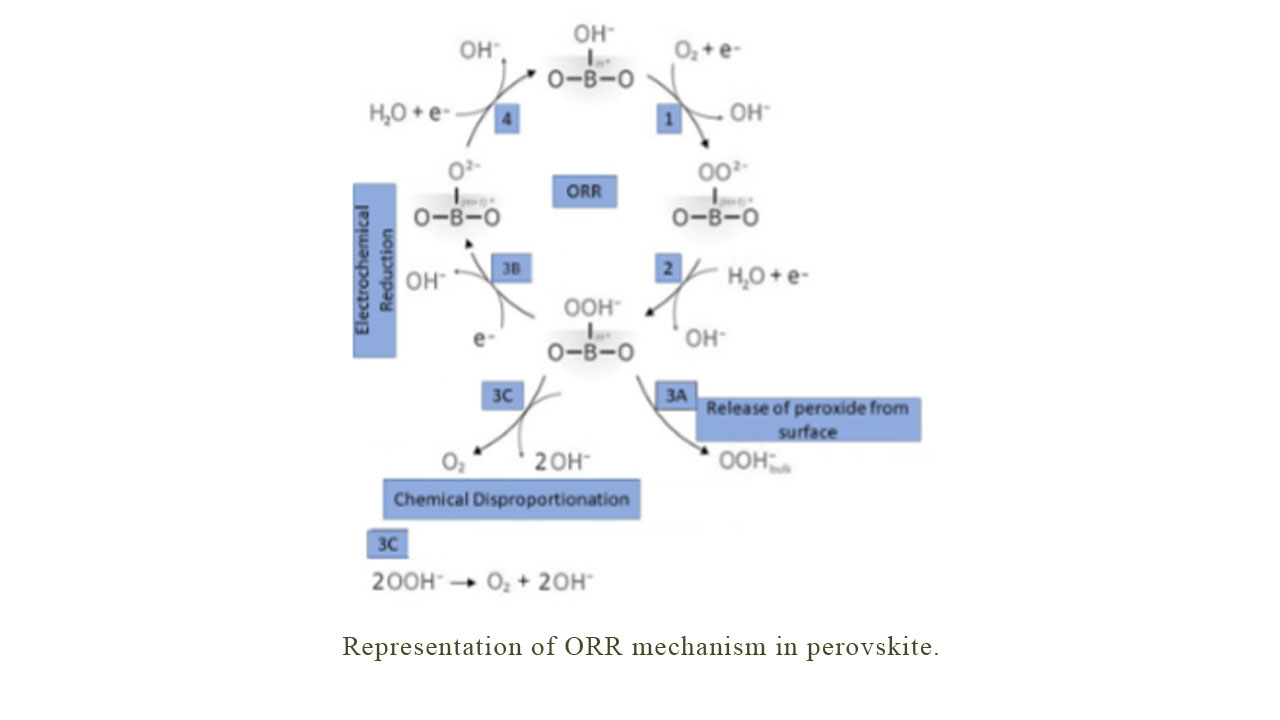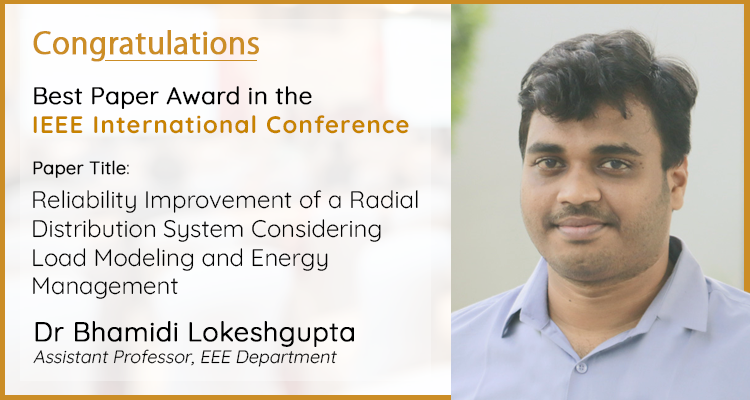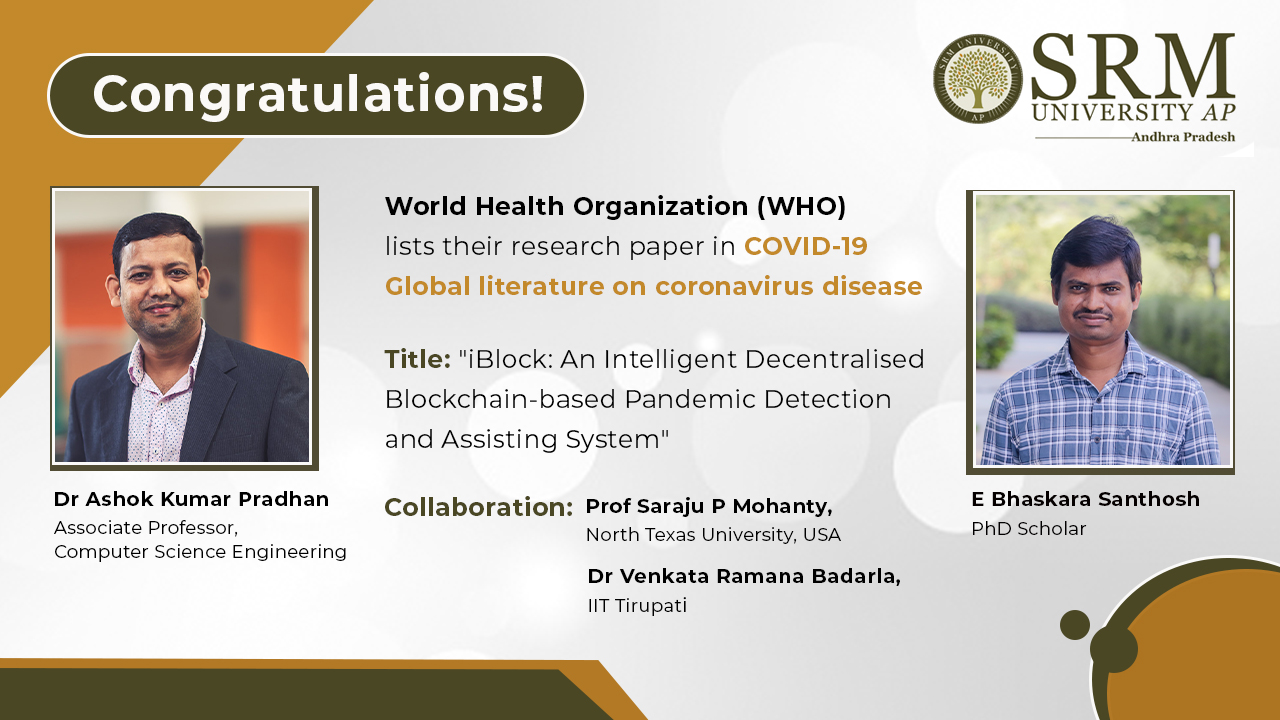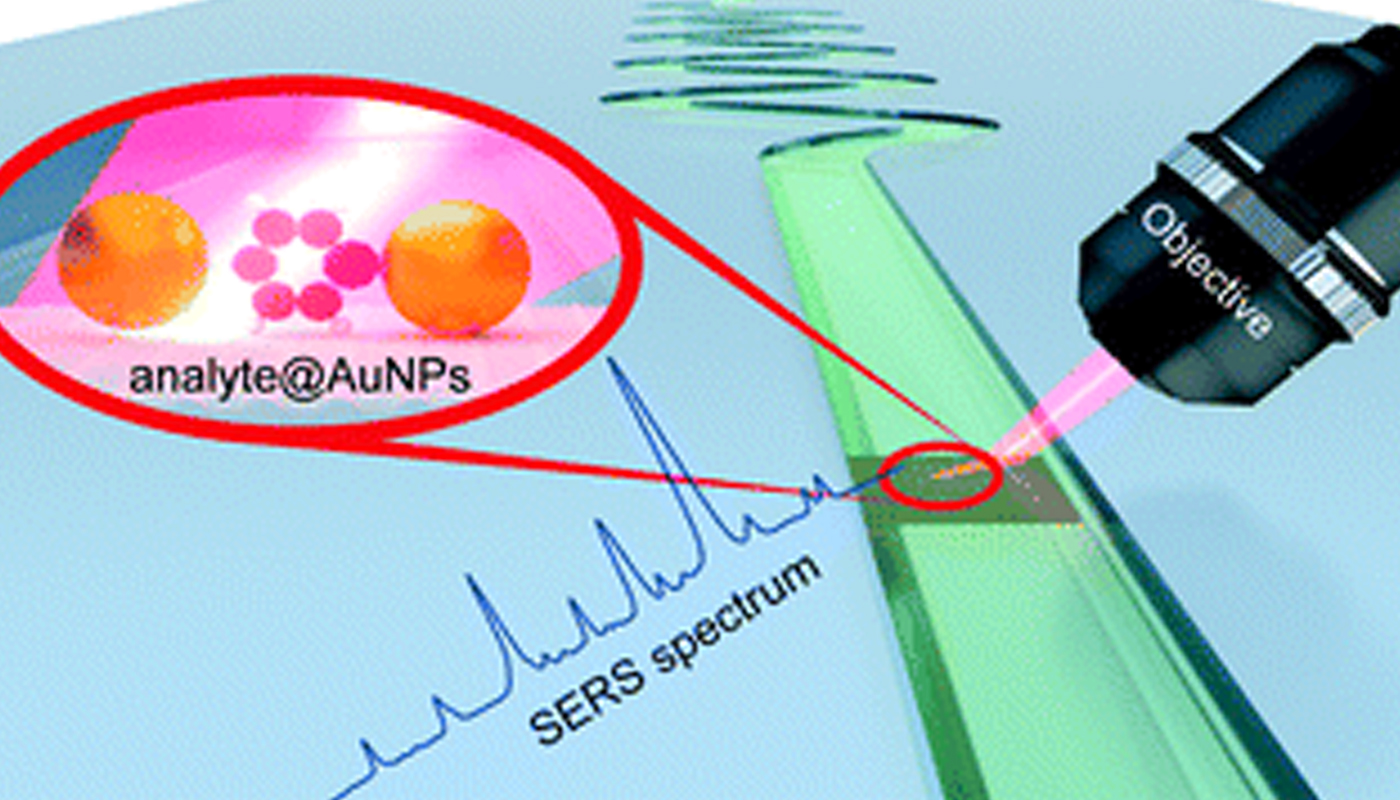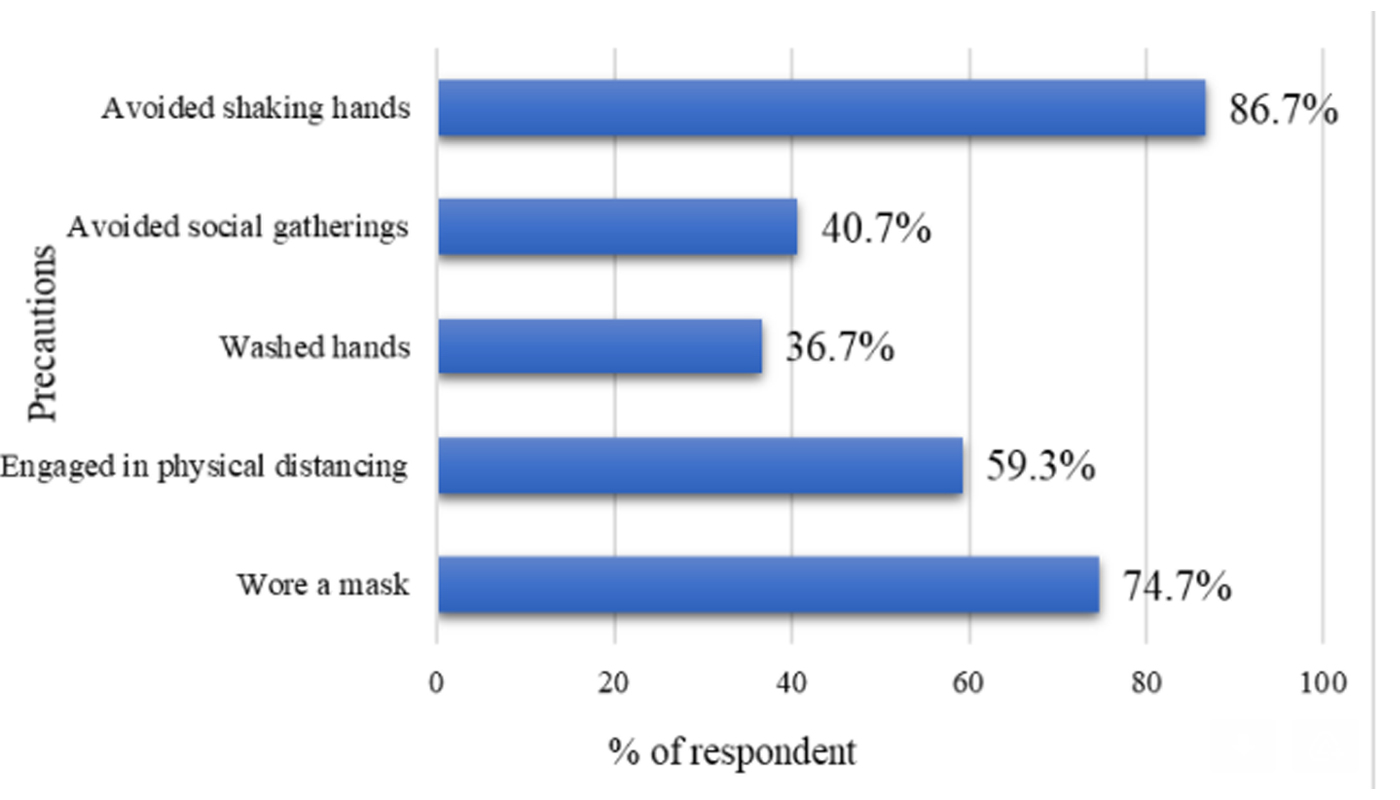Research News
- Accelerating research in the Quantum-dot Cellular Automata domain April 16, 2022
The Department of Electronics and Communication Engineering is glad to announce that our PhD scholar, Mr Vasudeva Bevara and BTech students, Mr Shakamuri Narendra Chowdary and Mr Bolem Venkata Surendra Babu, published a paper titled ‘High performance 2n: 1: 2n Reversible MUX/DEMUX Architecture for Quantum-dot Cellular Automata’ in the international journal ‘Numerical Modelling: Electronic Networks, Devices and Fields (SCI Index)’ under the supervision of Dr Pradyut Kumar Sanki.
Abstract of the Research
Quantum-dot Cellular Automata (QCA) lead to fundamental changes in nanoscale technology. It promises small area, low power & high-speed structures for digital circuit design. This paper presents efficient low power structures of Reversible Multiplexer & Demultiplexer (RMD) modules based on the QCA technology. The simulation result shows that the proposed RMD modules have utilised less area & low power consumption. The simulation, layout & energy dissipation analysis of the proposed RMD module has been carried out using the QCA Designer-E simulation tool.
Essentially, CMOS is used as a well-known traditional technology in the design of the Very Large-Scale Integration (VLSI) circuits, which leads to the introduction of QCA as new nanotechnology to overcome the limitations of CMOS technology, such as material, physical, power, heat & economic challenges.
In reversible computation, the power dissipation occurs only when the computation is started or when the output is permanently stored. The reversible logic circuits are being investigated to prevent data loss in irreversible logic circuits. The reversible logic circuits provide zero loss of energy/information making the logic circuits the most suitable for QCA nanotechnologies. This has resulted in widespread interest in the design of reversible logic circuits based on QCA over the last few years.
In this paper, a modular 2n: 1 reversible multiplexer & 1: 2n reversible demultiplexer design in a single circuit is proposed. The 2:1 multiplexer & 1: 2 demultiplexer is realised in a single module i.e., 3 × 3 RMD. The 3 × 3 RMD is formed fundamental building block of the modular 2n: 1 reversible multiplexer & 1: 2n reversible demultiplexer design is extended to large RMD design.
Practical Implementations of the Research
This work can push forward research in the QCA domain and overcome the limitations of Complementary Metal Oxide Semiconductor (CMOS) technology. Soon the era of Beyond CMOS will start as the scaling of the current CMOS technology will reach the fundamental limit. QCA (Quantum-dot Cellular Automata) is the transistor less computation paradigm and viable candidate for Beyond CMOS device technology.
So, they have implemented the High Performance 2n: 1: 2n Reversible MUX/DEMUX Architecture for Quantum-dot Cellular Automata compared to other researcher works. In future, the research team would like to explore deeper into QCA technology and design efficient circuits which are small sized, with less cell count and less power consumption.
Continue reading → - Introducing perovskite-based catalyst for microbial fuel cell April 8, 2022
Microbial fuel cells (MFCs) are biochemical systems producing green energy through the microbial degradation of organic contaminants in wastewater. The Oxygen Reduction Reaction (ORR) that takes place at MFC cathode decides the overall output of energy generation. Hence, the selection of ORR catalyst becomes pivotal in MFC fabrication for its efficiency and cost effectiveness. Gopa Nandikes P, PhD Scholar, Department of Environmental Science, proposes perovskite-based nanocatalyst as an excellent replacement to Platinum in his paper “Perovskite-Based Nanocomposite Electrocatalysts: An alternative to Platinum ORR Catalyst in Microbial Fuel Cell Cathodes”. The paper is published in ‘Energies Journal’ having an Impact Factor of 3.04.
The paper comprehensively summarises all the studies conducted with perovskite-based ORR catalyst in MFC, its unique reaction mechanism and the synergistic effect with carbon. The paper also throws light into various challenges and prospects to further improve the ORR activity of perovskite-based catalysts.
Abstract of the Research
Microbial fuel cells (MFCs) are biochemical systems having the benefit of producing green energy through the microbial degradation of organic contaminants in wastewater. The efficiency of MFCs largely depends on the cathode oxygen reduction reaction (ORR). A preferable ORR catalyst must have good oxygen reduction kinetics, high conductivity, and durability, together with cost-effectiveness. Platinum-based electrodes are considered a state-of-the-art ORR catalyst. However, the scarcity and higher cost of Pt are the main challenges for the commercialization of MFCs; therefore, in search of an alternative, cost- effective catalysts, those such as doped carbons and transition-metal based electrocatalysts have been researched for more than a decade. Recently, perovskite-oxide based nanocomposites have emerged as a potential ORR catalyst due to their versatile elemental composition, molecular mechanism, and the scope of nanoengineering for further developments. In this article, we discuss various studies conducted and opportunities associated with perovskite-based catalysts for ORR in MFCs. Special focus is given to a basic understanding of the ORR reaction mechanism through oxygen vacancy, modification of its microstructure by introducing alkaline earth metals, electron transfer pathways and the synergistic effect of perovskite and carbon. At the end, we also propose various challenges and prospects to further improve the ORR activity of perovskite-based catalysts.
- Going green is the new fashion March 31, 2022
The Department of Commerce is glad to announce that Dr Shailender Singh, Associate Professor, published a paper titled ‘Pro-Environmental Purchase Intention Towards Eco-friendly Apparel: Extension of the theory of planned behavior model’ in the Journal of Global Fashion Marketing published by Taylor and Francis. The research is conducted in collaboration with Dr Nishant Kumar, Amity University, Noida.
Abstract of the Research
In this study, the theory of planned behaviour (TPB) model is employed with environmental concern, personal moral norms, and perceived consumer effectiveness to better predict the eco-friendly apparel purchase intention of educated Indian youths. Variance-based partial least square-structural equation modelling (PLS-SEM) is applied to evaluate the hypothesized model. Findings indicated that perceived behavioural control has a strong significant positive influence on purchase intention, followed by personal moral norms, attitude, and perceived consumer effectiveness. Environmental concern is found to indirectly affect purchase intention through three primary TPB variables and personal moral norms. Multi-group analysis (MGA) examines the moderating effect of perceived consumer effectiveness on an attitude–intention relationship. The highly perceived consumer effectiveness group is shown to have a more consistent attitude-purchase intention relationship as compared to the low-perceived consumer effectiveness group. The study promulgates insights to professionals and policymakers to formulate sustainable marketing strategies and policies to cope with the indigenous market conditions.
The textile industry has emerged as a significant pollution source owing to a rise in carbon footprint, the spike in greenhouse gas emissions, and increasing landfill waste. Sustainable fashion has become a new style statement, and industries are shifting their orientation towards environment-friendly manufacturing. A plethora of research studies have been conducted to explore consumer behaviour intention towards visiting green hotels, green products, organic food, and electric vehicles. Studies have also been done to understand consumer behavioural intention toward sustainability in apparel, sustainability, social media communication, ethical fashion consumption behaviour, and eco-friendly apparel in developed countries. However, the paucity of research studies examining the influential factors affecting purchase intention of eco-friendly apparel in a developing economy makes this study more imperative.
This study furnishes the problem by examining the eco-friendly apparel purchase intention of the educated Indian youth in the sustainable apparel framework by investigating the potential of three core predictors of purchase intention in the theory of the planned behaviour model. Furthermore, the study extends the model by adding three more variables: environmental concern (EC), personal moral norm (PMN), and perceived consumer effectiveness (PCE). Moreover, this study also examines the PCE as a moderator between consumer attitude and eco-friendly apparel purchase intention (PI), which adds to the existing body of knowledge. The study promulgates insights to professionals and policymakers to formulate sustainable marketing strategies and policies to cope with the indigenous market conditions.
Based on the proposed extended framework, the study disseminates several practical implications to attain sustainability in fashion:
(i) The strong PBC influence on apparel purchase intention would facilitate marketing professionals to support consumers with sustainable apparel choices through clear visibility, long-term benefits, and striking design with a vast form of offerings, sustainability certification, and ease of access.
(ii) It has also been observed that youth’s moral obligation to behave ethically no longer depends on social pressure. Consumers may feel that the discussion on pro-environmental intention is not having social acceptance. Policymakers must bring opinion leaders to pitch the benefit of using organic clothing so that it can be discussed socially and develop suitable sustainable purchase intent.
(iii) Marketers should use vivid marketing communication tools to educate customers about the attribute-based benefits of organic apparel and the technological difference which makes it different from fast fashion.
(iv) Policymakers should sensitize people about the deteriorating environment and try to teach pro-environmental intent through green info-commercials, organic apparel labels, socio-environmental themes in products, and affordable pricing strategies.
(v) Marketers may adopt various media platforms to showcase how individual-specific green behaviour is self-sufficient in combating environmental problems. This would increase the PCE level among people, further leading to an attitudinal shift.The Indian government can launch an awareness campaign based on the theme of environment protection through individual contributions and urge citizens to accept green as a socially accepted norm.
- Dr B Lokeshgupta received the Best Paper Award March 28, 2022
Studies that open new possibilities into some of the gripping issues in the scientific domain have transformed SRM University-AP into the epicentre of cutting-edge research and investigations. We are proud to announce that Dr B Lokeshgupta, Assistant Professor of the Department of Electrical and Electronics Engineering has won the Best Paper Award at IEEE Second International Conference on Power, Control and Computing Technologies ICPC²T 2022 held at NIT Raipur, Chhattisgarh. The paper titled “Reliability Improvement of a Radial Distribution System Considering Load Modeling and Energy Management” was co-authored by Dr S Sivasubramani and Mr. Ram Prakash from IIT, Patna. The research gives new insight into energy management and power consumption patterns.
Abstract of the Research
Increasing energy demand and recent advancements in electrical and distributed generation (DG) technology have made power systems complex. Therefore, the reliability assessment is important for efficient planning and operation of distribution networks. The system reliability can be improved with optimal DG integration and energy management schemes. This work mainly studies the impact of optimal DG planning with an energy management scheme on the reliability of radial distribution network. Usually, the reliability of a power system is evaluated using the distribution system reliability indices which are based on load point and customers. The voltage-dependent load model and time-varying load profile for different load classes are included in this work for pragmatic planning. Particle swarm optimization (PSO) algorithm is used to find the optimal site and size of DG units and optimal scheduling of the shiftable loads. The proposed model of optimal DG allocation with energy management is evaluated with a case-based analysis. The modified IEEE 33-bus distribution system is considered in this model to demonstrate the improvement of reliability and operational parameters. Simulation results verify the efficacy of the model.
About the Research
In recent decades, a high load growth rate and frequently changing power consumption patterns are observed due to urbanization and industrialization. Also, the increasing penetration of renewable-based DG has caused a significant mismatch between power generation and electricity demand pattern. This mismatch introduces reliability and power quality issues with loss of energy and revenue to the utilities in power systems. Thus, various energy management programs are carried out by utilities to encourage consumers to change their load patterns. This paper proposes a reliability improvement technique in a radial distribution system by optimal planning of disperse generation and energy management programme.
Social Implication
The research proposes an offline algorithm for the efficient planning and operation of radial distribution networks. Simultaneous deployment of distribution generation (DG) and energy management system (EMS) makes the network more reliable compared to just DG allocation. Application of DG and EMS also improves other operational parameters of the network like power loss and voltage profile.
In future, the energy management concept can be extended with the inclusion of neighbourhood power-sharing model in the environment of multiple smart home consumers and prosumers.
- WHO recognises research article on pandemic detection model March 25, 2022
The healthcare system across the globe has been under colossal pressure since the emergence of novel coronavirus pandemic. The pandemic has also unveiled some of the greatest gaps in the existing healthcare systems. The research paper authored by Dr Ashok Kumar Pradhan and his PhD student E Bhaskara Santhosh, Department of Computer Science and Engineering, proposing a blockchain-based pandemic detection model was recognised by WHO and the paper was listed in COVID-19 Global literature on coronavirus disease. The paper titled “iBlock: An Intelligent Decentralised Blockchain-based Pandemic Detection and Assisting System” was published in collaboration with Saraju Mohanty, University of North Texas and Dr Venkata Ramana Badarla, Associate Professor, IIT Tirupati. The authors have expressed their deepest gratitude to Science and Engineering Research Board (SERB) for Grant number TAR/2019/000286 and SRM University-AP for supporting this work.
Abstract of the Research
The recent COVID-19 outbreak highlighted the requirement for a more sophisticated healthcare system and real-time data analytics in the pandemic mitigation process. Moreover, real-time data plays a crucial role in detection and alerting process. Combining smart healthcare systems with accurate real-time information about medical service availability, vaccination, and how the pandemic is spreading can directly affect the quality of life and economy. The existing architecture models become inadequate in handling the pandemic mitigation process in a real-time dataset. This is because, the present models are server-centric and controlled by a single party, hence to manage confidentiality, integrity, and availability (CIA) of dataset is a challenging task. Therefore, a decentralised user-centric model is essential, where the CIA of user data can be assured. In this paper, we have suggested a decentralized blockchain-based pandemic detection and assistance system named as (iBlock) that uses robust technologies like hybrid computing and IPFS to support system functionality. Moreover, a pseudo-anonymous personal identity is suggested using H-PCS and cryptography for anonymous data sharing. The distributed data management module guarantees data CIA, security, and privacy using cryptography mechanisms. Furthermore, it delivers useful intelligent information in the form of suggestions and alerts to assist the users. Finally, the iBlock reduces stress on healthcare infrastructure and workers by providing accurate predictions and early warnings using AI/ML technology.
Contributions of the Research
i) Proposes a novel architecture model for pandemic detection and alertness using a blockchain called as “iBlock”. It supports sharing of real-time data utilization.
ii) The proposed system introduces suitable privacy and security mechanisms to cover system-level data privacy and security.
iii) It also suggests a logical combination of blockchain and AI/ML on hybrid computing to support global level requirements during pandemic mitigation and alerting the systems.Social Implications
The proposed system helps in the early detection of Covid-19 and encourages people to use their health data anonymously in pandemic detection and mitigation process. Moreover, iBlock maintains all crucial data on blockchain for future sustainable healthcare solutions. The majority of pandemic detection and alerting systems are limited to prediction, however iBlock further simplifies the area-labelling to cover area wise mitigation mechanisms. The classification of areas helps the government and healthcare organizations to plan sustainable preventive measures in a real-time scenario. It also helps in prediction of new cases and death rates with the aid of a dedicated AI/ML detection engine module. To motivate the people to share legitimate data, the proposed model even suggests a reward mechanism to influence the participants.
The research investigates the advanced possibilities in smart healthcare architecture to bring down the time and effort for pandemic mitigation activities. Read to know more.
- Varying impact of health expenditure in Southeast Asia March 24, 2022
Health expenditure assumed enormous importance with the outset of coronavirus pandemic. The disparity between public and private health expenditure will often reflect in the health outcome of any nation. Through the research paper titled ‘The dynamics of public and private health expenditure on health outcome in Southeast Asia’ published in the journal Health and Social Care in the Community, Dr Shailender Singh, Associate Professor, Department of Commerce, attempts to argue that public expenditure on health has a substantial impact over private spending across the countries of ASEA.
Abstract of the Research
This study examines the dynamics of public and private health expenditure on health outcomes in Southeast Asia, vis-a-vis two of the Sustainable Development Goals (SDGs). The techniques of fixed effect, random effect, and feasible generalized least square methods are employed to obtain robust estimates. Further, the analysis dives deep into the country-specific impact of public and private health expenditure on health outcomes using the technique of seemingly unrelated regression. Estimates show that, across Southeast Asia, public health expenditure alone contributes to improving life expectancy at birth, lower levels of under-five, and non-communicable disease mortality rates. Unlike public health expenditure, private health expenditure contributes to better health outcomes only in Brunei and Singapore but not across the countries of Southeast Asia.
The paper asserts that, despite the statistical significance of private health spending with respect to the health outcomes, it does not contribute to lower mortality rate (MR) and higher life expectancy at birth. The results strongly support several prior pieces of evidence in the literature regarding health expenditure and health outcomes. The country-specific estimates show that public health spending contributes greatly to lower mortality rate, particularly in Brunei and Singapore. By contrast, private health spending does not contribute to lower levels of U5MR and NCD mortality rate across the countries of ASEA except in Cambodia, Indonesia, and Philippines.
The differences in economic development and the settings of health systems in these countries could be a plausible reason for the inability of private health expenditure to contribute to lower levels of NCD mortality rate in most of these countries. The result implies that more funding to the public health system has the potential to lower U5MR and NCD MR close to the SDGs target across the countries of ASEA. Also, strengthening the health system through providing greater access to preventive services for diabetes, hypertension, respiratory diseases, and cancers at primary care units may help in better diagnosis and management of these chronic conditions in Indonesia, Laos, and Myanmar where NCD MR is relatively high. However, an increase in funding alone may not be sufficient at improving health outcomes. For emerging conditions, diet modification, active physical exercise, little tobacco and alcohol consumption are also imperative.
The research is reported to be the first of its kind that examines the dynamics of public and private health expenditure on health outcomes in line with the SDGs targets. Apart from the traditional indicators commonly used as health outcomes in the literature (life expectancy and U5MR), the study further extends the literature by introducing NCD MR as an additional health outcome which could play a pivotal role in providing empirical evidence to the health policymakers and researchers.
Health plays an important role in promoting human capital and the economic growth of a country. The available stock of human capital in a country determines the rate of growth in its per capita income. A healthy individual contributes more to their economy by allocating more hours to work, earning more disposable income, in turn investing more in human development.
As the individual stock of health tends to diminish over time, there is a need to augment it by making more investment in time, income, and regular medical care. Thus, this research work has a societal benefit for the population of Southeast Asia to identify the threats in the field of health and focus more on their well-being for improving the state of health. Dr Singh conducted this research in collaboration with Dr Nishant Kumar, Amity University, Noida.
In future, he also intends to analyse the impact of socioeconomic and behavioural health determinants on the health system efficiency of the Middle East region, and to predict the key drivers for health care expenditure growth in the Middle East region through Grossman-PLS Modeling Approach.
- Paper presentation in International Conference on Innovations in Information Technology March 22, 2022
Mr Mudigonda Himansh, a 3rd-year BTech-CSE student, has presented a research paper in the IEEE International Conference on Innovations in Information Technology-2022 organised by IIIT Kottayam, Kerala India, in Feb-2022. The paper will be published in IEEE Xplore (Scopus indexed). Dr V M Manikandan, Assistant Professor in Computer Science and Engineering at SRM University-AP, is the co-author of the presented paper titled “A Statistical Study and Analysis to Identify the Importance of Open-source Software”.
Open-source software has picked up pace in the past decade with support from multinational conglomerates and huge open-source communities. We hear a lot about the success of many open-source projects, but we fail to understand how many do not make it. In this paper, Mr Himansh and Dr Manikandan understand the dynamics behind open-source software. They start with the need for open-source alternatives. Then look at a few concerns open-source software developers and maintainers face. Next, we would understand the various requirements of open-source software. Later, we would touch upon the different attributes that affect the selection of open-source software and the decisions to make while building general-purpose, open-source software. Then we would analyse the 5-determinants of open-source software success. Finally, we would look at the data collected from 482 data points from 24 countries and then analyse the data by forming graphs and charts.
This research provides the required knowledge to the open-source and non-open source software developers before-during-after development and production of the software or project. “Our future work is focused on the applications and predicting the scalability of large-scale OSS with machine learning,” says Dr Manikandan.
Continue reading → - Highly efficient catalysts of Ruthenium clusters on Fe3O4/MWCNTs for hydrogen evolution reaction March 22, 2022
“Highly Efficient Catalysts of Ruthenium Clusters on Fe3O4/MWCNTs for Hydrogen Evolution Reaction” is the latest paper published by Prof Ranjit Thapa, Professor of Physics at SRM university-AP and his PhD scholar, Mr Samadhan Kapse, in ‘New Journal of Chemistry’ having an Impact Factor of 3.591.
In this work, the chemical co-precipitation technique is adopted to produce Fe3O4 nanoparticles under an inert atmosphere and was utilized for HER studies. The Ru nanoparticles were profitably deposited over Fe3O4/MWCNTs GC electrode using electrochemical deposition technique. The superior HER activity was achieved on Ru/Fe3O4/MWCNTs in 0.1 M H2SO4 aqueous media. We have demonstrated that the synthesized electrocatalyst offers a low overpotential of 101 mV to achieve a current density of 10 mA cm-2 towards the hydrogen evolution reaction. It displays long-term durability, exceptional cyclic stability even after 1000 cycles. DFT calculations imply that the availability of both octahedral and tetrahedral sites in Ru/Fe3O4/MWCNTs with low overpotential is more efficient towards HER. It is emphasized that a low percentage of ruthenium in the prepared catalyst can be substituted as a promising HER catalyst for sustainable energy technologies.
Abstract of the paper
Producing molecular hydrogen (H2) using water provides a sustainable approach for developing clean energy technologies. Herein, we report highly active ruthenium clusters (Ru) supported on iron oxide (Ru/Fe3O4) and Fe3O4/multi-walled carbon nanotubes (Ru/Fe3O4/MWCNTs) by simple electrochemical deposition in a neutral aqueous medium. The supported catalyst exhibits good hydrogen evolution reaction activity (HER) in an acidic environment. Cyclic voltammograms (CV) in potassium ferrocyanide (K4[Fe(CN)6]) confirm MWCNTs enhance the electron transfer process by decreasing the redox formal potential. The overpotential of Ru/Fe3O4/MWCNTs and Ru/Fe3O4 electrocatalysts versus reversible hydrogen electrode (RHE) was found to be 101 mV and 306 mV to reach a current density of 10 mA cm-2 . As prepared, the catalyst displays good stability and retain its HER activity even after 1000 cycles. Further, the stability of Ru/Fe3O4/MWCNTs was studied using chronopotentiometric (CP) technique for 12 hrs and found negligible loss in the catalytic activity towards HER. To explore the role of Ru and underneath MWCNTs to improve the catalytic performance of Fe3O4, density functional theory (DFT) calculations were carried out. DFT calculations indicate the octahedral site of Ru/Fe3O4 favours HER with low overpotential. However, Ru/Fe3O4/MWCNTs is more efficient towards HER could be due to the availability of both octahedral and tetrahedral catalytic sites.
Social implications of the research
Renewable energy generation is of greater importance in the present circumstances. This is caused by the depletion of non-renewable energy sources like fossil fuels and other hydrocarbon deposits and the release of greenhouse gases into the atmosphere. Hydrogen has gained considerable interest as an energy storage and energy carrier because of its high energy density (146kJ/g). Furthermore, its lightweight, profusion nature and the release of water during its combustion eliminate environmental pollution and thus contribute to defeating the global energy crisis. Also, hydrogen is an important and ideal energy source to develop fuel cells. A number of methods have been explored to generate molecular hydrogen. Among them, water electrolysis is a promising technology for generating high-purity hydrogen from water. An excellent electrocatalyst is obligatory to liberate hydrogen gas effectively from water. A higher HER activity is known to be obtained from platinum (Pt) and Pt-based catalysts. Given its high cost and low surplus, it limits expansion to the industrial scale. Over the few past decades, lots of efforts have been made by many research teams to find out alternative catalysts to substitute Pt electrodes.
The paper is published in collaboration with Shwetha Kolathur Ramachandra, Doddahalli Hanumantharayudu Nagaraju, and Shivanna Marappa; School of Applied Sciences, REVA University, Bangalore-560064, Karnataka, India. According to the research group, the density functional theory can boost the searching process of highly promising electrocatalysts for hydrogen evolution reactions in renewable energy generation.
- Microfluidic SERS as a powerful tool in Analytical Chemistry March 19, 2022
The Department of Chemistry is glad to announce that Dr J P Raja Pandiyan has published a paper titled ” Microfluidics and surface-enhanced Raman spectroscopy, a win-win combination?” in the journal ‘Lab on a Chip’ having an impact factor of 6.79 in collaboration with researchers from different universities across India, Germany, and Japan.
Abstract of the Research
With the continuous development in nanoscience and nanotechnology, analytical techniques like surface-enhanced Raman spectroscopy (SERS) render structural and chemical information of a variety of analyte molecules in ultra-low concentration. Although this technique is making significant progress in various fields, the reproducibility of SERS measurements and sensitivity towards small molecules are still daunting challenges. In this regard, microfluidic surface-enhanced Raman spectroscopy (MF-SERS) is well on its way to join the toolbox of analytical chemists. This review article explains how MF-SERS is becoming a powerful tool in analytical chemistry. We critically present the developments in SERS substrates for microfluidic devices and how these substrates in microfluidic channels can improve the SERS sensitivity, reproducibility, and detection limit. We then introduce the building materials for microfluidic platforms and their types such as droplet, centrifugal, and digital microfluidics. Finally, we enumerate some challenges and future directions in microfluidic SERS. Overall, this article showcases the potential and versatility of microfluidic SERS in overcoming the inherent issues in the SERS technique and also discusses the advantage of adding SERS to the arsenal of microfluidics.
About the Raman Research Group at SRM AP
Raman spectroscopy, invented by Sir CV Raman in 1928 and got Nobel Prize in 1930, is a vibrational spectroscopic technique that works based on the principle of inelastic scattering of light. Surface-Enhanced Raman spectroscopy (SERS) is one of the modern analytical techniques which can detect chemical and biomolecules in an ultra-low concentration. The research group is working on the development of the SERS technique to address the issues in food, environmental, energy and biological science.
The newly developed SERS substrates are mainly used for the detection of biological samples for disease diagnosis, food samples to ensure food safety, water samples to study the contamination and pollution rate. These studies can make meaningful social changes and improvements.
- Effects of Covid-19 on mental health March 19, 2022
The Department of Economics is delighted to announce that Dr Ghanshyam Kumar Pandey and his research group; Sheeba Moghal, Rakshit Barodia, and William Carey have published an article titled “COVID-19 and its effects on the mental health of people living in urban slums in India” in the ‘Journal of Information and Knowledge Management’, having an Impact Factor of 1.3.
The study confirms that more than three-fourth of the population suffer from mental stress due to the spread of COVID-19 and the lockdown imposed by the government. Eighty per cent of those surveyed stated that the stress had affected their decision-making. The study also confirms that the number of dependents, monthly income, number of living rooms, maintenance of physical distancing norms, avoidance of social gatherings, government support, health insurance, and living in a rented house are significantly related to the mental stress of people living in slums in Andhra Pradesh in India.
Abstract of the Research
The COVID-19 pandemic has had a devastating effect on the mental health of people from different backgrounds; these effects have been particularly acute among lower-income households and in slums. There has been a steep rise in mental illness and behaviours associated with it since 2020, especially in slums characterized by poverty, poor housing, high density, and unhealthy environments. This paper aims to examine the effect of COVID-19 on the mental health of people living in the slums of Vijayawada and Visakhapatnam in the state of Andhra Pradesh in India.






